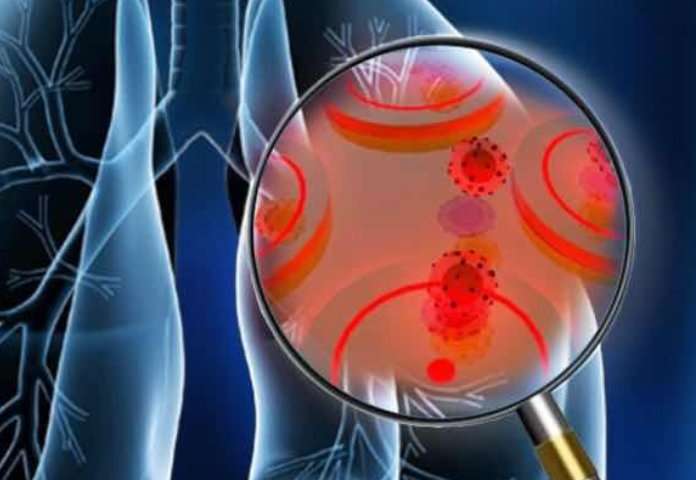
Credit: Qiaoqiang Gan, University at Buffalo
Early diagnosis of cancer greatly improves the odds of successful treatment. Yet many people, especially in developing countries, lack access to facilities to detect the disease.
To address this issue, a University at Buffalo-led research team is creating a new cancer-spotting tool that health care providers could eventually use in areas that lack hospitals, clinics and other treatment centers.
The tool—described in a pair of research papers published in IEEE Journal of Selected Topics in Quantum Electronics (Aug. 17) and ACS Sensors (July 18)—is based upon a unique gold biosensor the research team created. When paired with a computer or smartphone and other inexpensive tools, the system is capable of spotting cancer biomarkers from a blood sample.
“Smartphones and computers are increasingly common in places where basic health care is not. Our system takes advantage of that. We’ve designed a simple yet effective cancer screening system that we believe can eventually be deployed to areas that need it most,” says Qiaoqiang Gan, Ph.D., associate professor of electrical engineering in UB’s School of Engineering and Applied Sciences, and a co-lead author of the studies.
“Preliminary tests show our system is about as effective as the diagnostic tests that many hospitals use. We’re hoping to refine the system and get it into the hands of people who need it the most, because the earlier we detect cancer, the better the treatment outcomes are,” says Yun Wu, Ph.D., assistant professor of biomedical engineering at UB, also a co-lead author of the studies.
The Department of Biomedical Engineering is a joint program of the Jacobs School of Medicine and Biomedical Sciences at UB, and the School of Engineering and Applied Sciences.
To test the system, researchers mounted the gold biosensor to a glass slide. They then placed blood samples from lung cancer patients on top of the biosensor. Next, they shined a LED light onto the sample and biosensor.
The blood contains tiny organic particles called exosomes, which contain lung cancer biomarkers. These biomarkers bind to the biosensor and cause the intensity of the light to change.
By measuring the change of the light intensity before and after applying the blood sample, researchers can detect the biomarkers. This type of sensing is known as surface plasmon resonance, or SPR sensing.
In experiments with a smartphone, researchers mounted the biosensor to the phone’s camera. The system provided real-time imaging of exosomes containing epidermal growth factor receptor (EFGR), a protein commonly found in non-small cell lung cancer patients that can be used as a biomarker for screening and early detection.
The system was also capable of detecting another biomarker called programmed death-ligand 1 (PD-L1), which is a protein that can stop the immune system from attacking cancer cells. Doctors measure PD-L1 levels in lung cancer patients to assess the effectiveness of a checkpoint inhibitor treatment, a new type of immunotherapy.
Overall results show the system is comparable in sensing accuracy to common cancer diagnostic tests, such as enzyme-linked immunosorbent assay (ELISA).
There are several advantages to the new system. Perhaps most helpful, researchers say, is the system’s small size, its ease of operation and its relatively low fabrication cost compared to existing diagnostic tools that health care providers use. The system’s portability makes it ideal for areas that lack access to health care services, they say.




